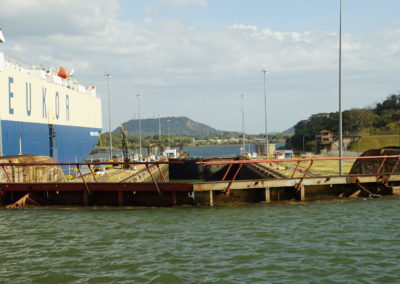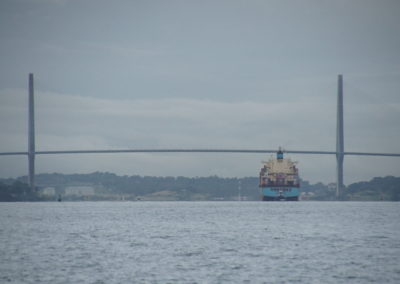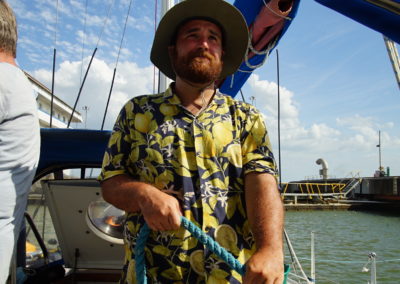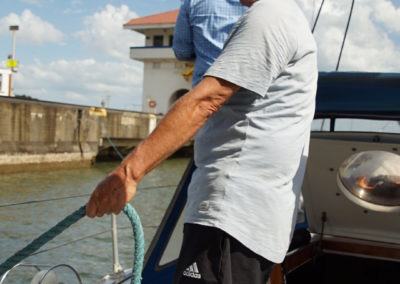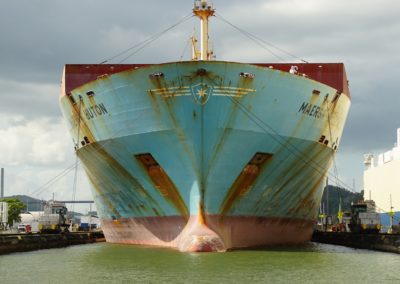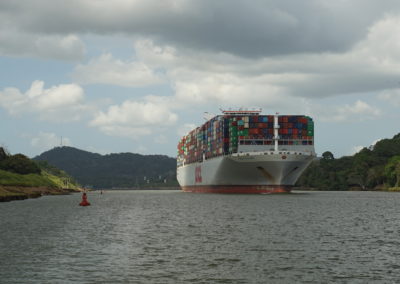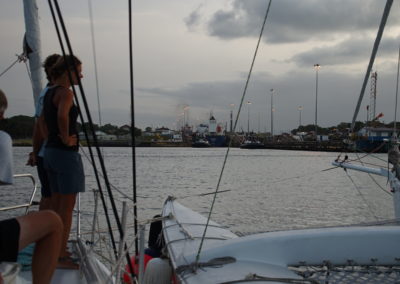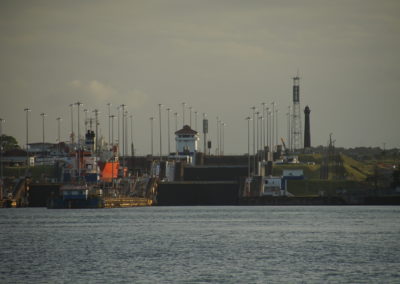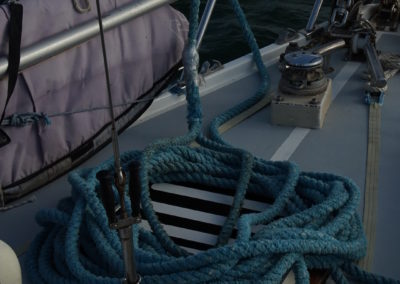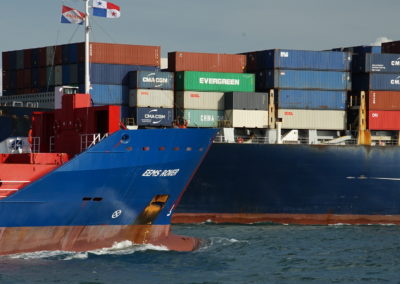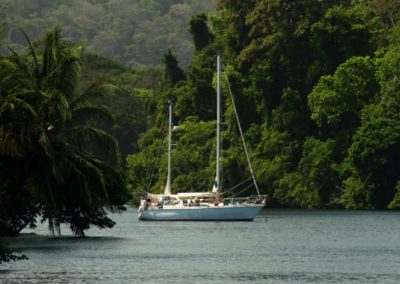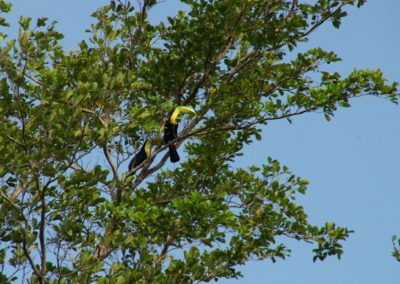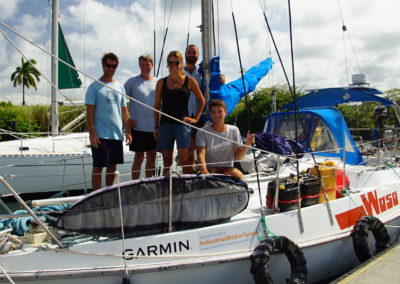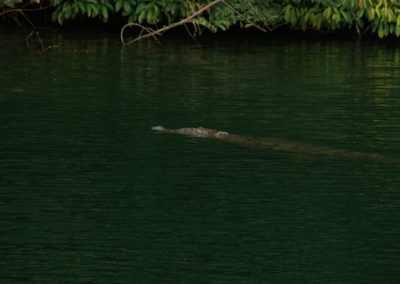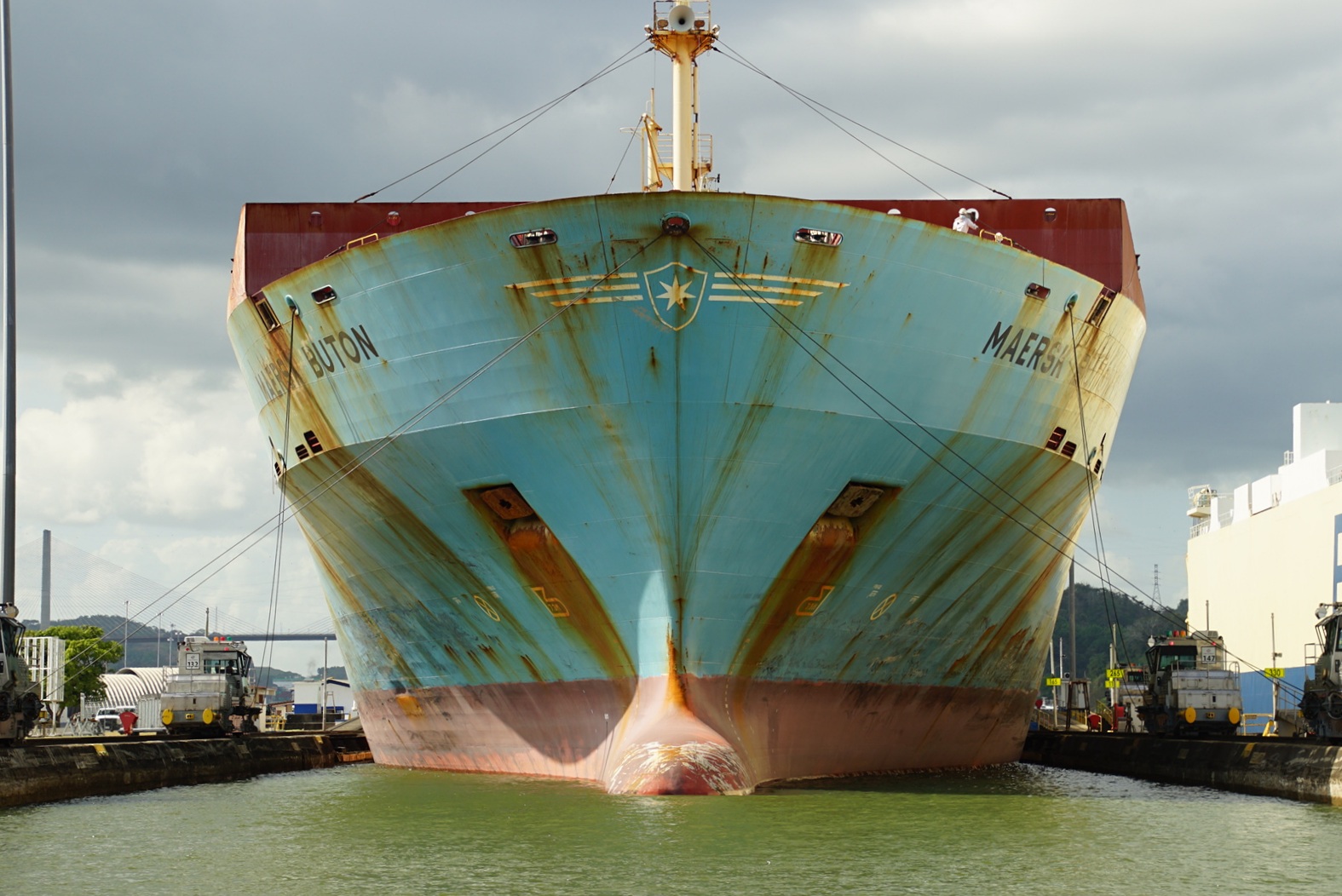
The history of the Panama Canal is exciting and probably as opaque as the back and forth of my travel plans:
After Panama peacefully got independent from the colonial power Spain, it joined Great Colombia among others as Venezuela and Equador. During the time of the Spaniards, it rumbled in the heads of various politicians. With the wish to create a passage through the Isthmus of Panama and connect the Atlantic Ocean with the Pacific Ocean, the idea of the Panama Canal was born.
Motivated by the success of the Suez Canal, connecting the Indian Ocean and the Mediterranean Sea, it were the French who made an agreement with the Colombian government, planned and began the construction of the canal, in 1881. Due to various miscalculations, planning deficiencies, diseases, poor organization and bribes, the company went bankrupt in 1889. The construction work stopped
Now it was the Americans who showed interest. They wanted to finish the work begun by the French. Unfortunately, the Colombians refused. A a result, president Roosevelt sent a warship to the region, occupied the country, killed the militia leader and proclaimed the state of Panama. – Like that, nothing interfered the restart of the building process
Some years later, even a few month earlier than expected, S.S ANCON was the first ship to pass the Culebra Cut, the exit to the Pacific Ocean, in 1914
During the construction period from 1881 – 1914, over 30,000 workers died.
Just two decades ago, in the afternoon of December 31, 1999 , the United States returned the rights of the Panama Canal to the Republic of Panama.
Nowadays, up to 14,000 ships pass through the canal every year. Each transit saving a detour of some 7,000 nautical miles (13,000 km) around Cape Horn and through some of the most dangerous waters anywhere.

For me, Panama was a kind of terminus in the Atlantic. The gates of the canal instead, were my ticket into the Pacific and to a completely new chapter of my journey.
To get all the preparations done, I moored in the marina of Shelter (P)Bay. This was way more comfortable than anchoring in the dirty water and between all the freighters in Colons anchorage. My uncle and also Sofien arrived a few days later. In the marina we could have a nice shower and do our groceries with the shopping bus.
Also I arranged an appointment for the necessary admeasuring. In addition to the ship’s length, the WASA’s canal suitability was also checked. „Are the cleats strong enough?“, „Does the engine work properly?“, „Do they have a working toilet?“. I was a little scared in advance. With my small engine I can not reach the required 5kn (officially 8kn) by far, but make it in good conditions, with tailwind, current and with scrubbed underwater hull just to four of them.
Unfortunately, even the canal officials are not immune to Covid and the survey date got postponed twice! Therefore the surveyor didn’t complain about the boat speed or anything else.
After the inspection was accomplished and I was able to pay my transit fee, the next bummer came right away: For the earliest available date, they told us to wait five more days. – „This can’t be true!“. We had been sitting in the marina for over 10 days nox. Slowly but surely, we were fed up being condemned to do nothing.
Well, “some things are just out of your hands!“. We had to accept our situation and decided to a little boat trip to the neighboring Rio Chargres.
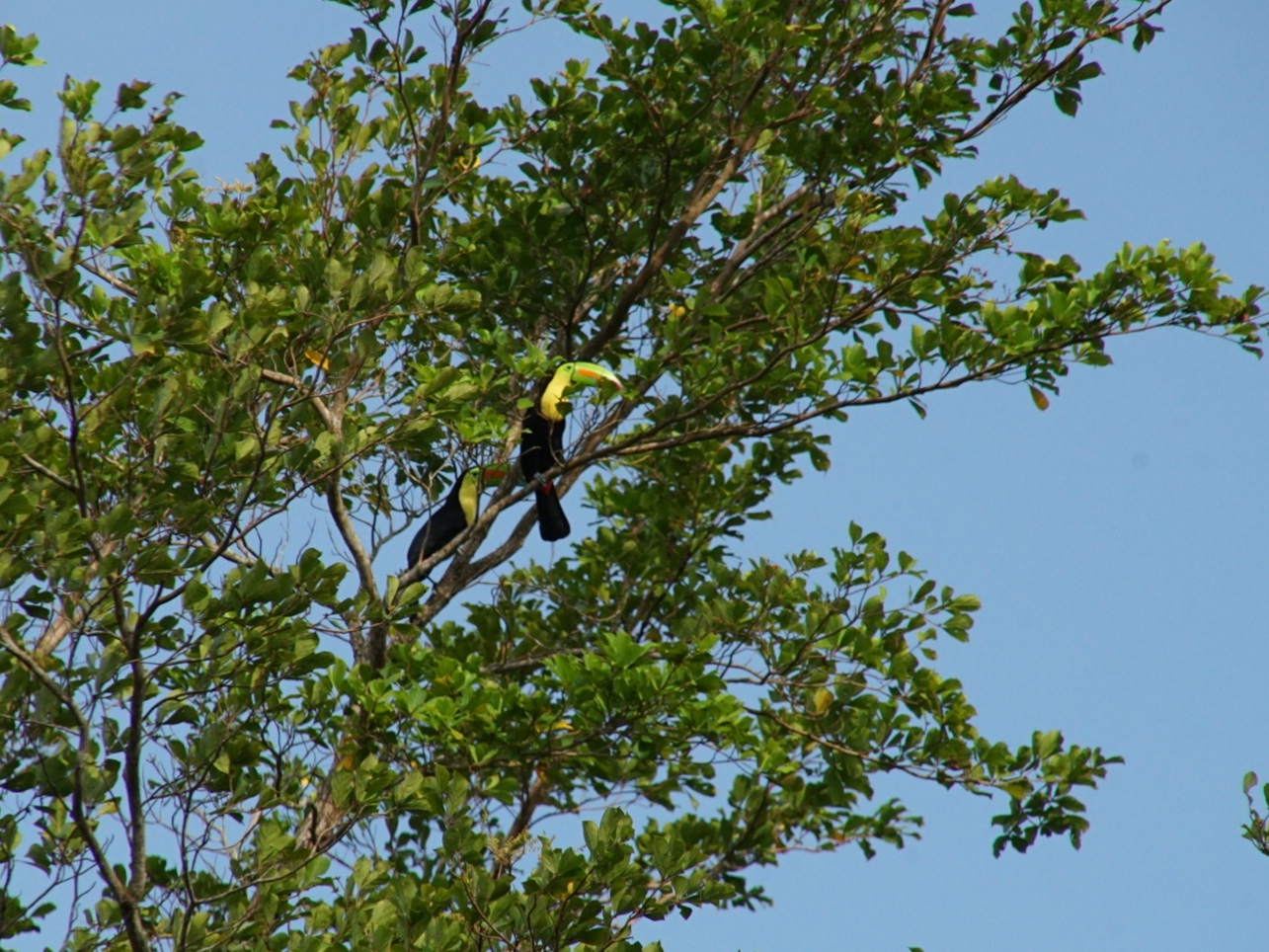
Under sail we cruised out of Colon Breakwaters and set course for the rivers entrance. A mixture of deciduous trees, palms, and mangroves lined the river’s course. It felt as if the world end behind that seam beyond had ended.
Between the leaves we discovered tucans, sparrows and many more birds whose names we really don’t know. In the water we spotted crocodiles and when the sun set and the rain started, we could hear the scream of dozens of hollow monkeys in the trees. We spent two nights in this beautiful and remote piece of nature, before we headed back to the marina taking care of the last things.
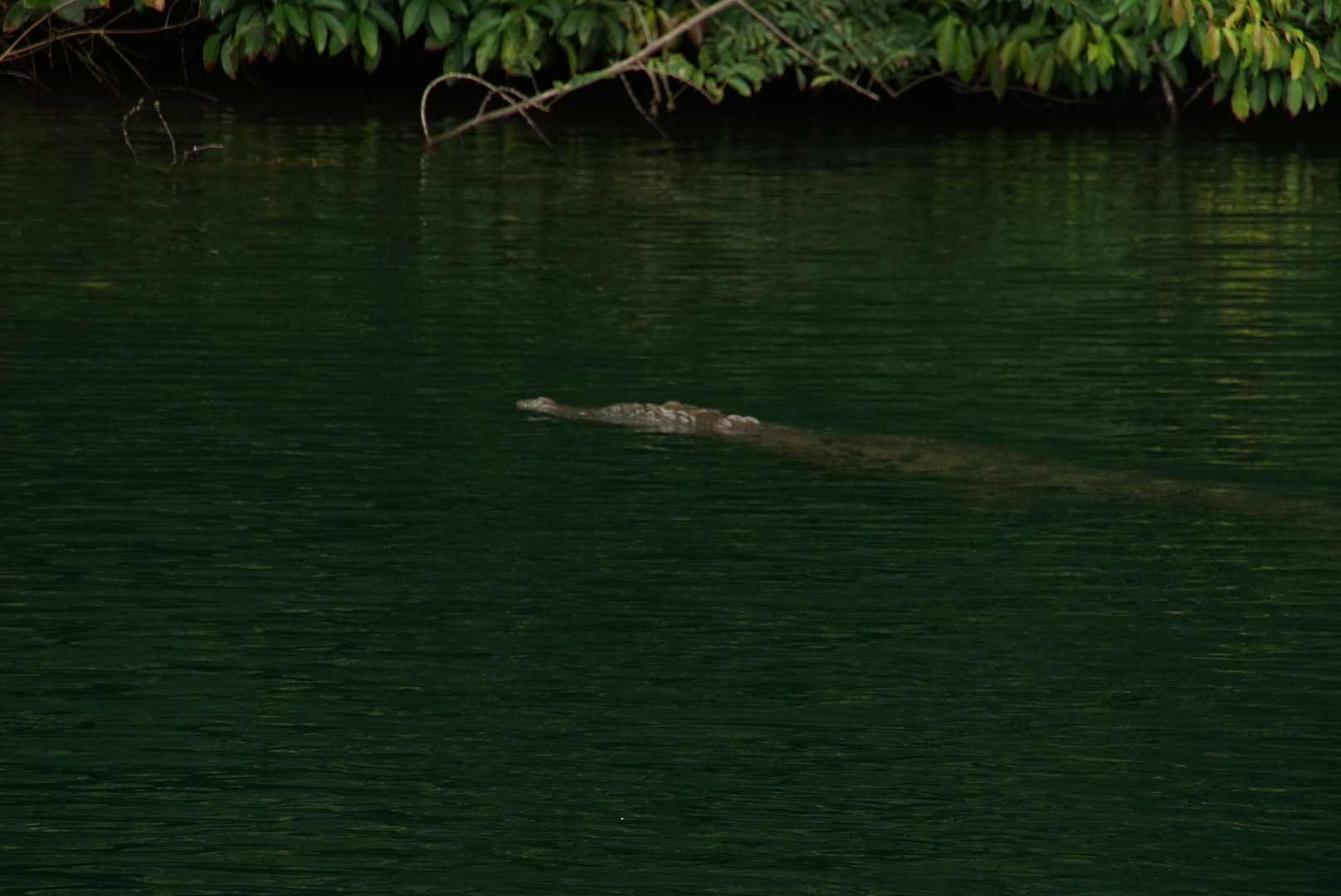
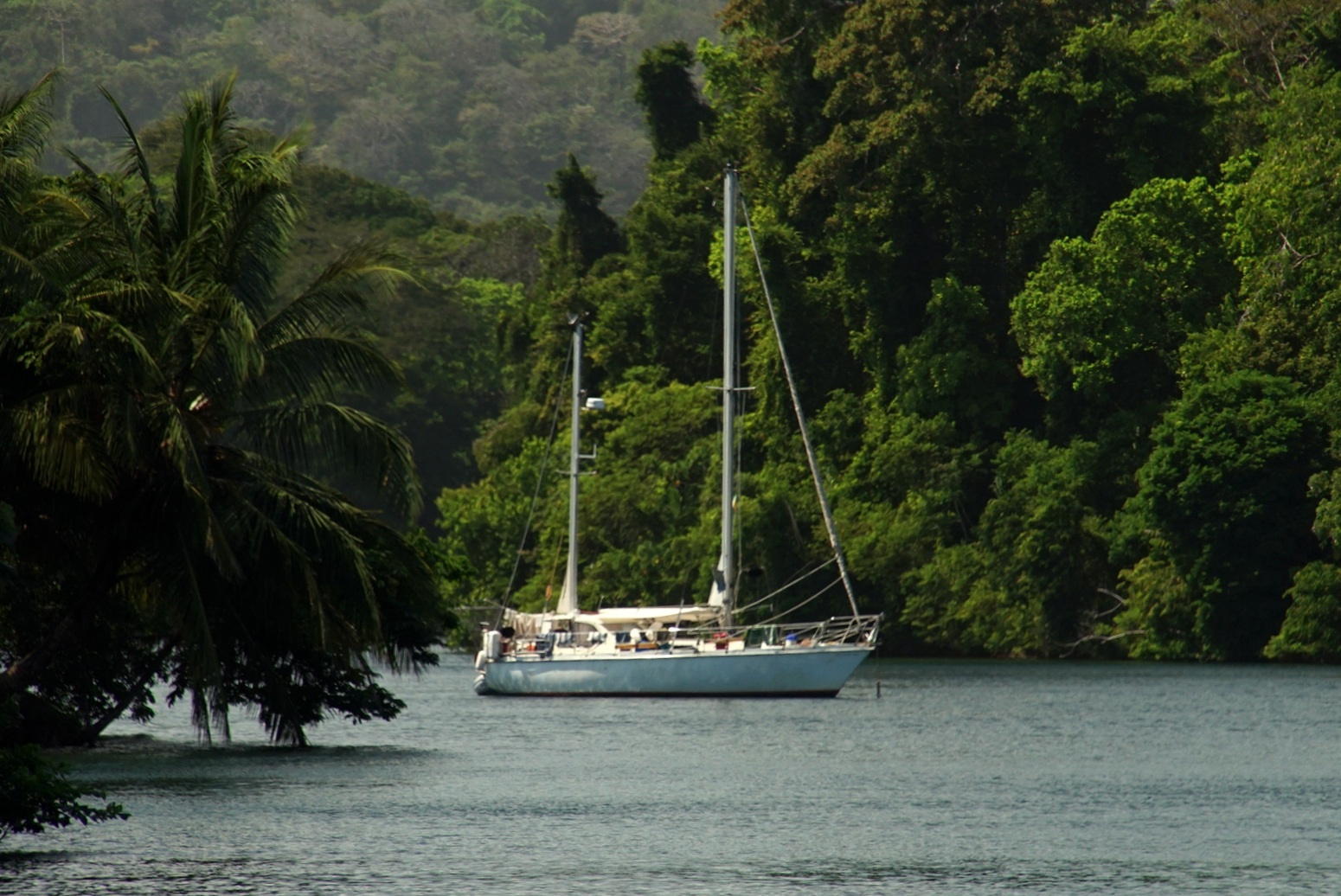
Actually, with Uli, Sofien and Neppo, I already had three out of four necessary linehandlers weeks ago. But unfortunately someone in Neppo’s immediate environment tested positive for Corona and so we could not take him through the canal.
Like that, two days before the appointment I suddenly stood there only having half a crew! I posted on various groups on Facebook, but hardly got any feedback. The cruisers net in the morning on the VHF also turned out to be no help. Therefore, I set out in the afternoon to address each and every boat in the marina. “Hey, good afternoon! I am from that little boat over there and I am looking for some helping hands on my canal transit on Tuesday…”
In the end my mouth was dry and my tong felt like an old piece of rubber. But I was lucky! Julia and George, a Chilean-Polish couple were keen on the experience and agreed to help us out of that jam!
Finally we were complete and ready to tackle the two-day passage. Lines and fenders had been delivered, Sofien and Ulli had done the grocery run and dinner was pre-cooked. A quick crew photo at the jetty and off we went!
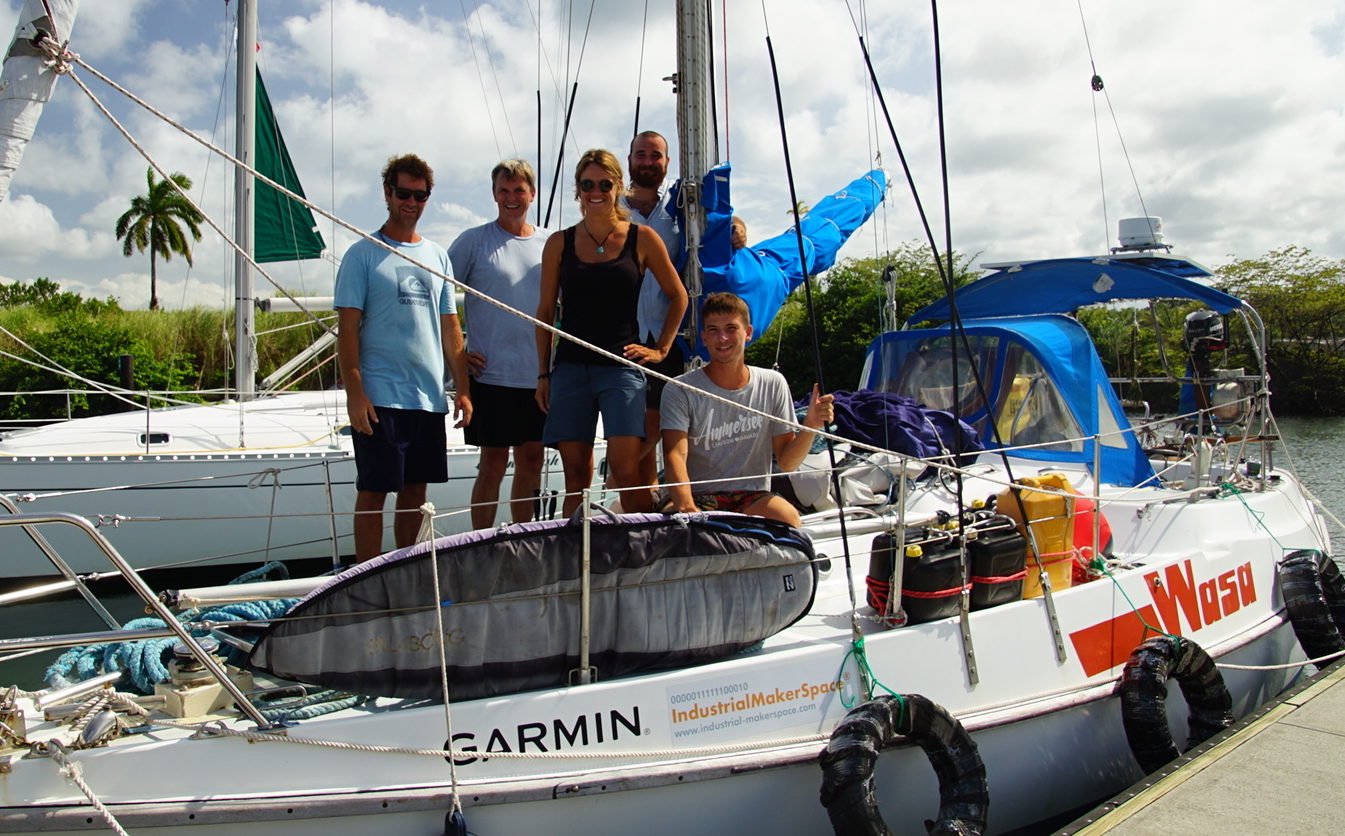
At 3 pm we had to be at the meeting point with the Advisor. Under engine we waited anxiously for the arrival of the pilot boat. After a short „hello“ and round of introductions, we immediately set course for the fairway and later for the Gatun Locks. On the way, we prepared more lines and fenders so that we could raft up with two other sailors, a trimaran and an American monohull, to go through the locks together.
Tying up worked without any problems. The trimaran was set to be in the middle and a monohull was tied to each side. At slow speed ahead, I approached the trimaran. Just when we arrived alongside and our fenders touched, we handed over bow and stern lines first, followed by two spring lines (diagonal connection lines).
After we were lashed down tightly, the procedure was repeated on the other swimmer and the Americans moored themselves as well.
Joined together as a triplet, it was the job of the middle boat to control the propulsion. Through the big lever, which we two outer boats had, we could take over the steering by engaging or disengaging the forward or reverse gear.
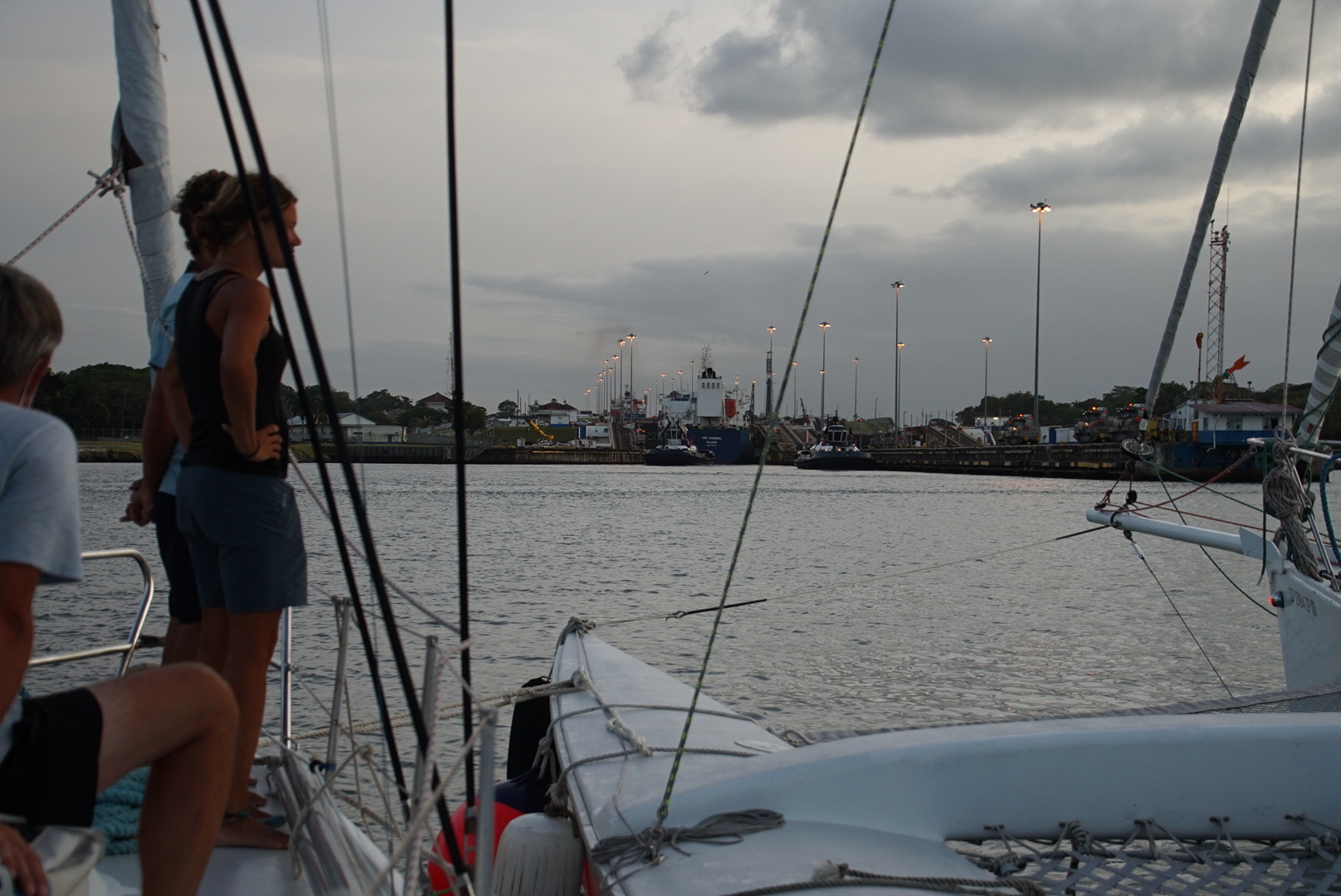
Around 18.00 we entered the first of the three Gatun Locks. The rough walls of each chamber towered a good ten meters into the sky. Two freighters and their pilot boats were already sitting in front of us we were the last to enter the chamber, under the strict supervision of the advisors.
From left and right, canal employees threw us thin lines with so-called monkey fists at the end. We had to knot these with our long and heavy mooring ropes so that they could be pulled up the lock wall.
Within a few minutes, more than 100,000 liters of water poured into the chambers, lifting us nine meters. Our task during this time was to ensure that the lines remained evenly tensioned and that our raft stayed in the center of the chamber.
After a total of three locks we had reached the level of Gatun Lake, where spent the night there at a mooring buoy.
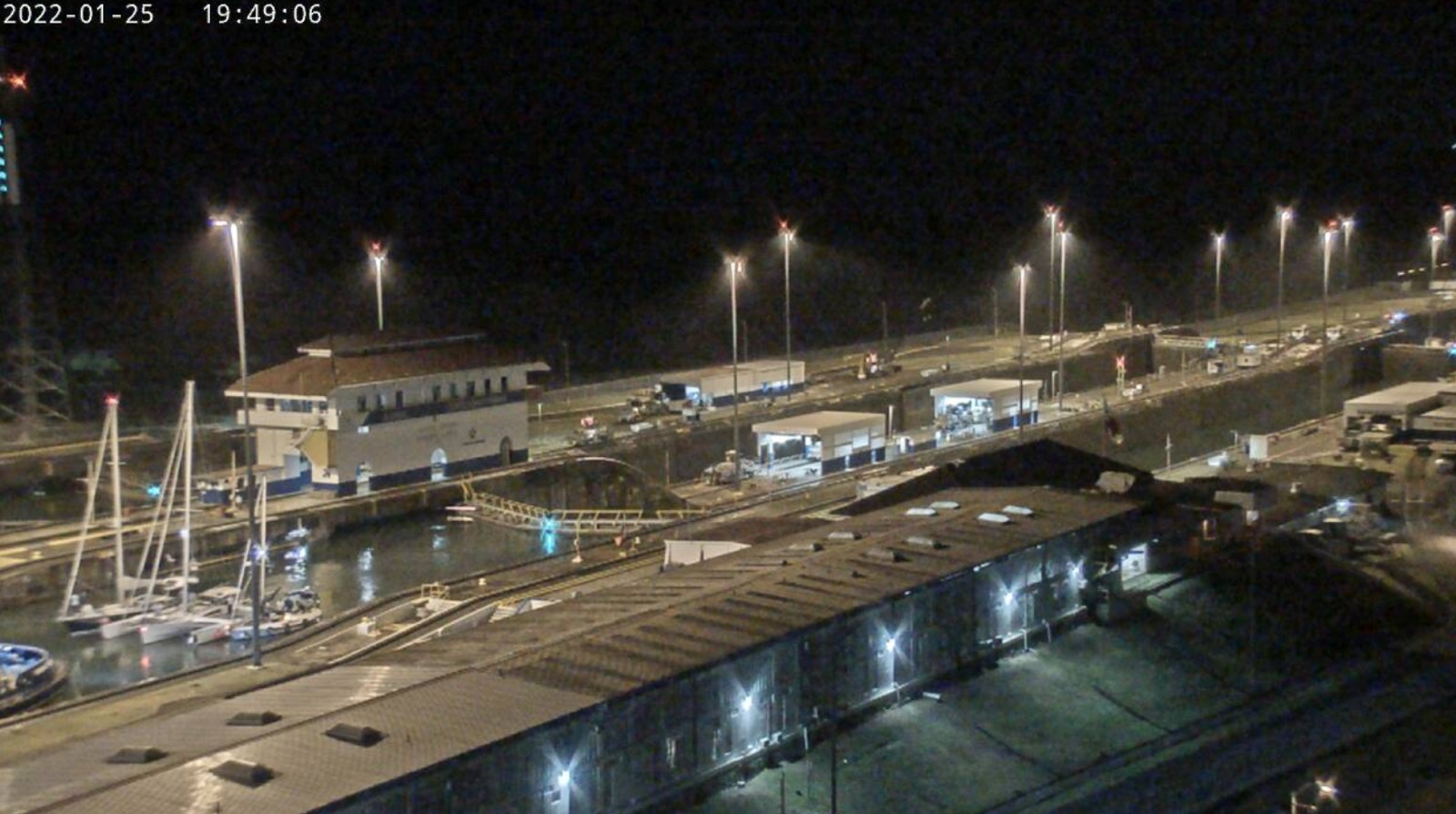
The next day promised to be similar. In the morning Luis, our new pilot came on board. As soon as he stepped over he advised us to start the engine and leave. He worried about the 26 nautical miles to Pedro Miguel lock, that we had to face with our limited boat speed.
Under way we cooked coffee, breakfast and lunch for six people. Continuously we were overtaken by some big freighters. Although the channel is mostly made to allof traffic in both directions, the sizwe of that ships, passing by close is impressive!
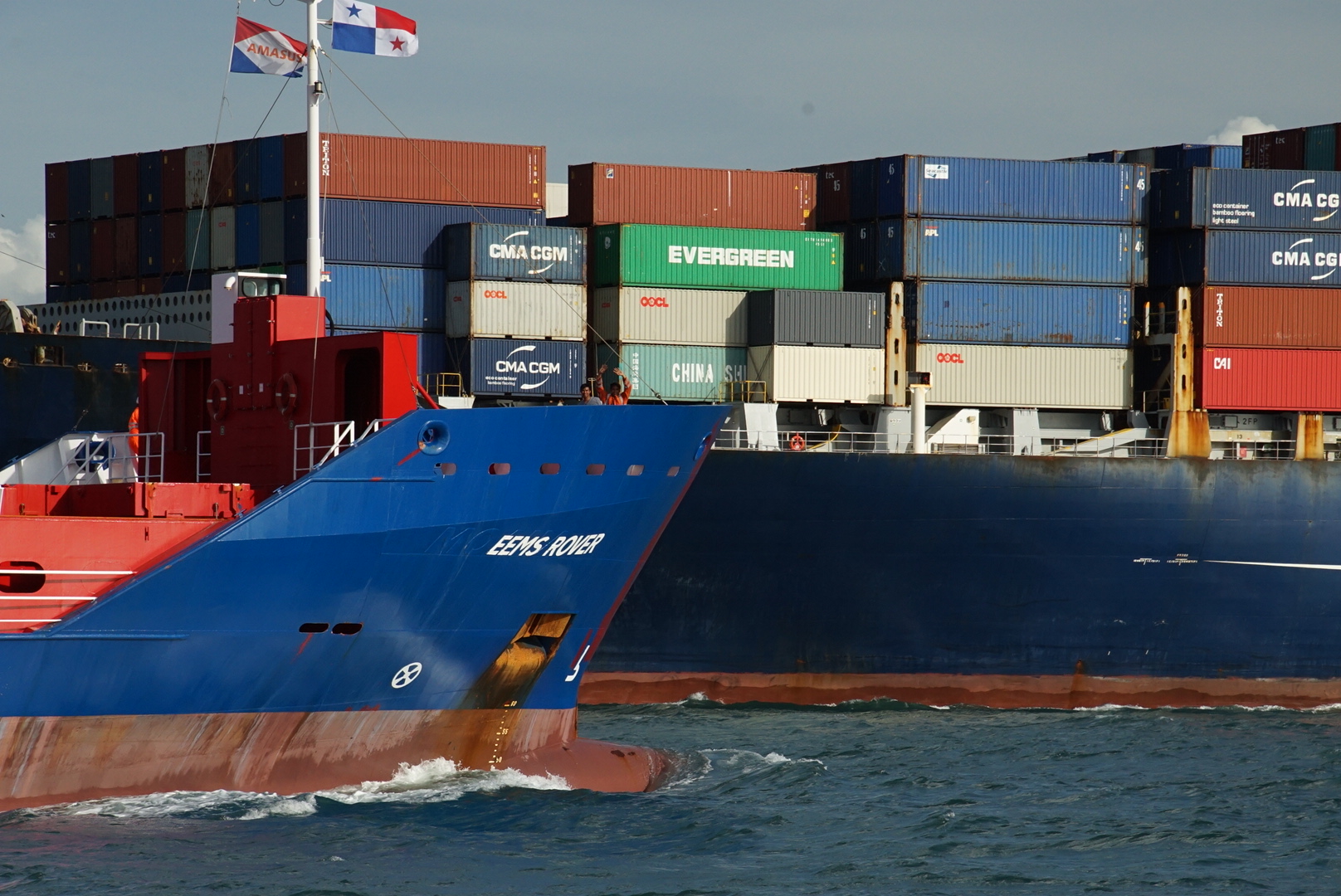
Almost we made it through the entire passage without incident. Well…, almost:
As we approached the first Pacific lock, the Pedro Miguel, our advisor made an annoying mistake.
Over the radio he asked the lock staff for an entry permit and advised me to enter the chamber and to tie up alongside the wall in a waiting position.
As he told me himself later, the radio contact was fragile and he understood “Yes, you can proceed.” But the opposite was the case! The previous lift was not yet fully completed and water was still flowing from one chamber to the other. Shortly after the entrance, we were suddenly grabbed by such an enormous sideways current that the boat was torn away and pulled sideways to the canal wall with ever-increasing speed.
When we hit the concrete, the impact was so strong that the car tires we were using as fenders simply burst! The water acted like a gigantic vacuum cleaner, sucking us against the wall with all its might. There was no chance to escape it. We were stuck against the wall and could see the water disappearing below us.
It took about five minutes for the flow to weaken. Finally we were able to free ourselves. I recognized a few scratches and dents in the rub rail, but fortunately no cracks have been heard by the entire crew other damage was visible.
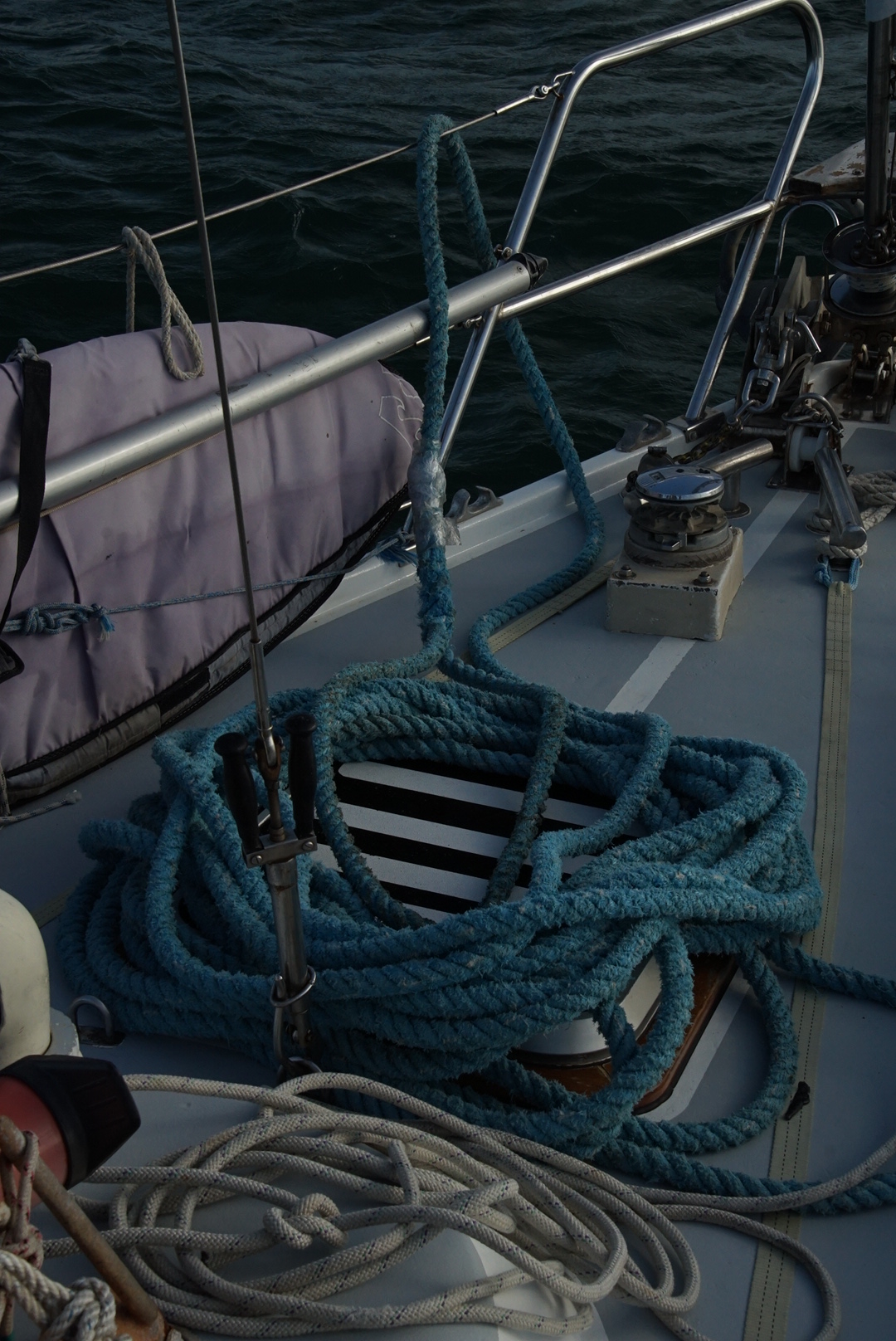
Hier darf nichts schiefgehen. Die vierzig Meter langen Leinen liegen ordentlich auf Deck aufklariert.
It took about five minutes for the flow to weaken. Finally we were able to free ourselves. I recognized a few scratches and dents in the rub rail, but fortunately no cracks have been heard by the entire crew other damage was visible.
During the downward locks we were the only sailboat. The others form the day before have been much faster. This meant actually handling all four lines ourselves. – No problem for Sofien, Uli, Julia and George. Without further incident, the WASA made it back into Pacific water for the first time since many years and we were able to enjoy our well-deserved mooring beer!
How to transit Panama Canal Transit without an agent!
On most websites or cruiser forums it is advised to use an agent for the channel transit. For his work, however, they usually charge fees in the amount of up to 600$. In view of the total cost, you might say that the few hundred dollars do not make the cake any more fat, but still, it’s 500 dollars that you have or no longer have.
Nowadays most of the employees of the authority speak at least broken English and the paperwork can be done even without knowledge of Spanish.
To prepare for transit you can either moor at Shelter Bay Marina, or anchor at the Flats (Anchorage F) in Christobal Bay.
To get the process started, contact the canal authority via phone. (+507-6916-4077)
The lady on the other end of the line spoke perfect English told me what to do and dictated an e- mail address (OPTTARA@pancanal.com) to which I had to send Form 4405 filled out and scanned (cell phone photo). Basically, in that form they ask for general information that they need to make an appointment with the admeasurer.
In response, a brief confirmation is returned, as well as another document for the refund of your deposit. Again, this has to be returned filled out including a picture of your passport.
Both documents must be filled out and taken to the bank on the day of payment!
After the Panama Canal Authority (ACP) has received all the documents, you will be assigned an expected survey date, which can be either in Shelter Bay Marina, or at anchor in the Anchorage F.
On the day of the appointment, you must call the number above again (or +(507) 443-2298) at 7.30 in the morning to confirm your appointment and get the exact time. Changes or cancellations can also be made or received by calling this number.
The surveyor usually comes to the boat before noon. He measures the exact length of the vessel and thereby includes all attachments such as anchor, bowsprit, windvane or davids at the stern. In the past, some yachts, close to 65 feet, therefore disassembled some of their appendages in order not to slide into the next more expensive price class.
The survey takes maybe half an hour. The official also asks some questions about the ship, speed, fuel consumption, tank volume, etc. and wants to know if a functioning toilet with holding tank is on bord.
Immediately after the survey you can drive to Colon with the received papers and pay the transit fees at the Citibank. Attention: A payment is only possible in cash and withdrawing money in Colon can be nerveracking. Via credit card you can only withdraw 250$ at a time. I had to repeat the process 12 times in the middle of the poor city! Therefore, it is best to use the ATMs inside the bank building! Also pay attention to the daily limit of the credit card!
From 6 p.m. of the same day, you can call the Marine Traffic Office at +507-272-4202 and ask for your passage date. The number is available 24 hours a day and you also always can always ask for information about changes.
Alternatively, you can call „CHRISTOBAL SIGNAL“ via radio on channel 12. Here you will receive the same information.
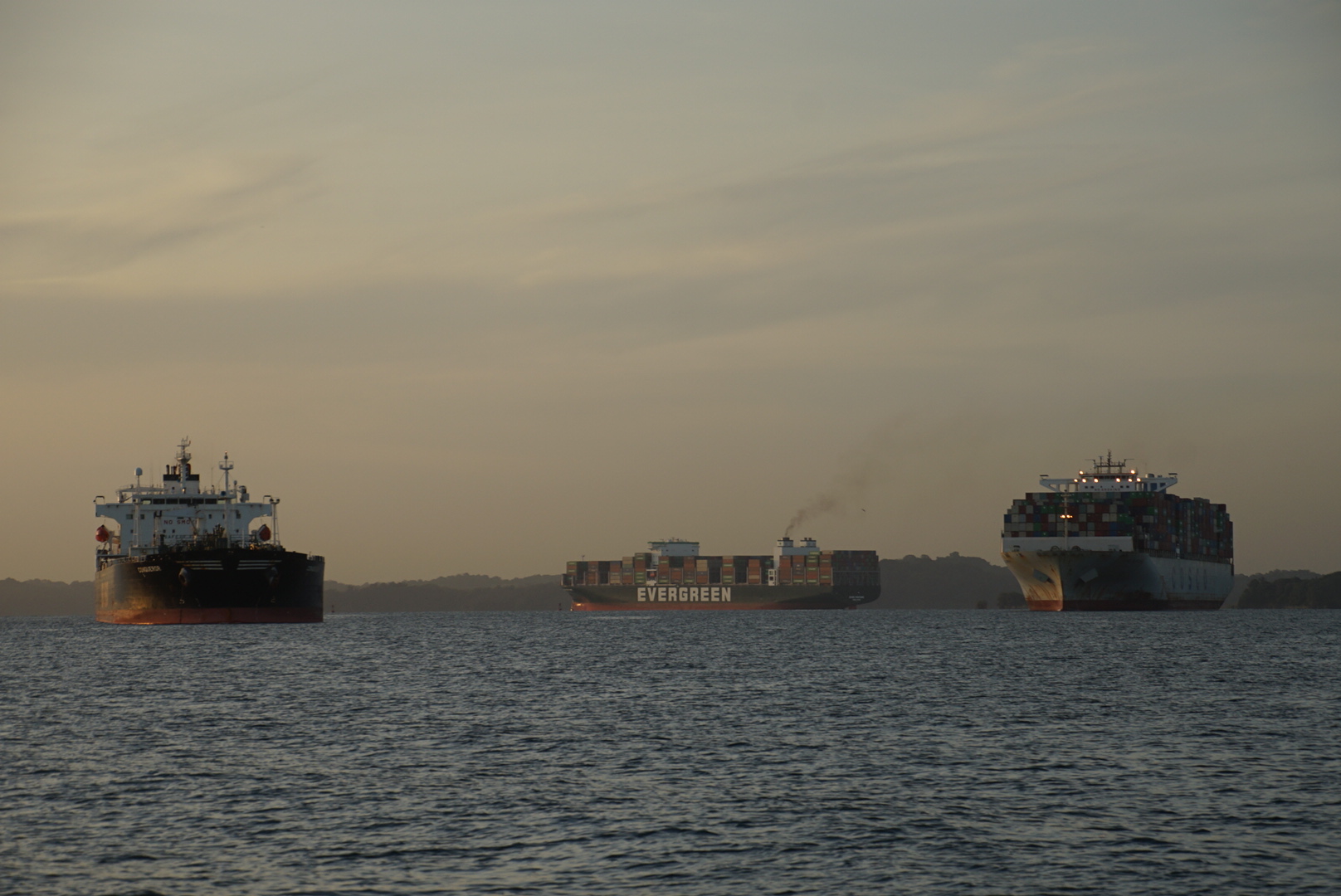
The transit usually takes two days. On the first day, you pass through the first three locks to Gatun Lake, where you spend a night at anchor or at the Muring buoy. Usually, you continue early the next morning to arrive at Pedro Miguel lock, the first lock downstream, in time.
No worries, just name the correct speed of your vessel during the inspection. The actual appointment for each chamber will be adaptable and arranged by the advisor while you’ re under way.
The required crew consists of a total of five people. One helmsman and four linehandlers. In addition to the crew, an advisor/pilot comes on board during the day. He/ she is brought by a pilot boat in the morning and picked up again in the evening. (Prepare fenders!)
Like that there are at least six people on board who must be provided with food and drink. The advisor must be provided with at least one hot meal, snacks and drinking water from sealed bottles. For the sake of respect itself, the advisor should be treated like any other crew member on bord!!!
Advantages of an agent:
- Payment by card might be possible
- The agent provides all forms
- Agent knows the procedure and can answer questions
Disadvantages of an agent:
- Expensive
- There are some false ones among them who only pretend to work for an agency.
- Communication with channel supervisors via three corners
Lines and Fenders:
For the transit you have to have at least four, fourty meters long and two centimeters thick mooring lines. Also, it is the skipper’s job to ensure to have enaough fenders on bord.
Both can be rented by the locals. I got mine from Yariel. He charged 75$ for the lines and 3$ more for each fender (car tires) and delivered everything straight to the boat. After the transit everything has been picked up in Panama City.
You can reach Yariel via Whatsapp at: +507 6444 6402
Transit Fees:
| Length overall | Transit toll | Inspection charge | Security charge | Buffer | Total deposit required |
| <65 | 1600 $ | 75$ | 165$ | 1060$ | 2900$ |
| 65-80 | 2400 $ | 75$ | 165$ | 1060$ | 3.700$ |
Website of Panama Canal: www.pancanal.com
Ressources:
www.pancanal.com; Panama Canal – Wikipedia; Erik Bauhaus – Panama Cruising Guide
The mentioned e- mail addresses, phone numbers and forms I have used myself. Nevertheless, it can be that these or the links provided change with the time. If they do not work, you can find all forms and further information on the official homepage of the Panama Canal. Please let me know if some of the links do not work anymore.
You dont want to miss any new blogposts?
Here you can send me an e – mail and subscribe to my newsletter.
And this is the link to my Instagram account, where I shout out new posts and update my travel adventures regularly: the_nosy_sailman

